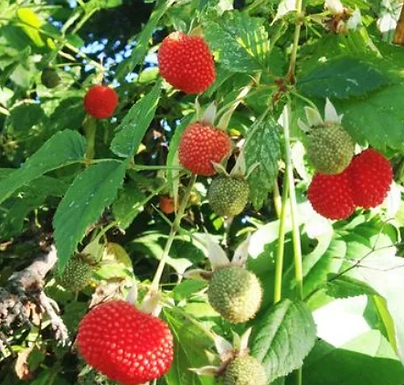Plant identification guides:
Bush tucker food forest
Information about medicinal qualities of plants, or about their use as medicines, is for interest only, and is not intended to be used as a guide for the treatment of medical conditions.
As with all medicinal applications of Australian bush foods, please do your due diligence and consult with First Nations or other Australian herbal specialists before utilising as a remedy for any condition.
Some parts of the plant may not be edible or some may need preparation before they are safe to eat or use in any way. We do our best to describe their traditional & modern uses. It is the reader’s responsibility to ensure they are fit for their intended use.
We can not take any responsibility for any adverse effects from the use of plants. Always seek advice from a professional before using a plant medicinally.
Basic info:
For more information, please see: https://tuckerbush.com.au/atherton-raspberry-rubus-probus/
Uses and Interesting Information:
Culinary Uses: Atherton raspberries are often used in jams, jellies, and desserts due to their sweet and tart flavor. They can also be enjoyed fresh, added to salads, or used in smoothies.
Medicinal Uses: Traditionally, various parts of the Atherton raspberry plant have been used in herbal remedies. The leaves are sometimes brewed into teas believed to aid digestion and promote overall health.
Ornamental Purposes: The Atherton raspberry bush can be cultivated for ornamental purposes in gardens, providing both aesthetic appeal and edible fruit.
Wildlife Habitat: The dense foliage of the Atherton raspberry provides habitat and food for various wildlife, including birds and insects, contributing to local biodiversity.
Interesting Stories
Discovery in the Wild: The Atherton raspberry was first described in the 19th century in the Atherton Tablelands of Queensland, Australia. Its discovery highlighted the region's rich biodiversity and the importance of conserving native plant species.
Indigenous Knowledge: Indigenous Australian communities have long utilized the Atherton raspberry for its nutritional and medicinal properties. Their traditional knowledge emphasizes sustainable harvesting practices and the importance of preserving native flora.
Conservation Efforts: As habitat loss and climate change threaten many native plants, conservationists are working to protect the Atherton raspberry and its ecosystem. These efforts include habitat restoration and promoting awareness of the species' ecological significance.
Culinary Revival: In recent years, there has been a resurgence of interest in native Australian foods, including the Atherton raspberry. Chefs and food enthusiasts are incorporating this unique fruit into modern cuisine, celebrating its distinct flavor and cultural heritage.
Recipes:

